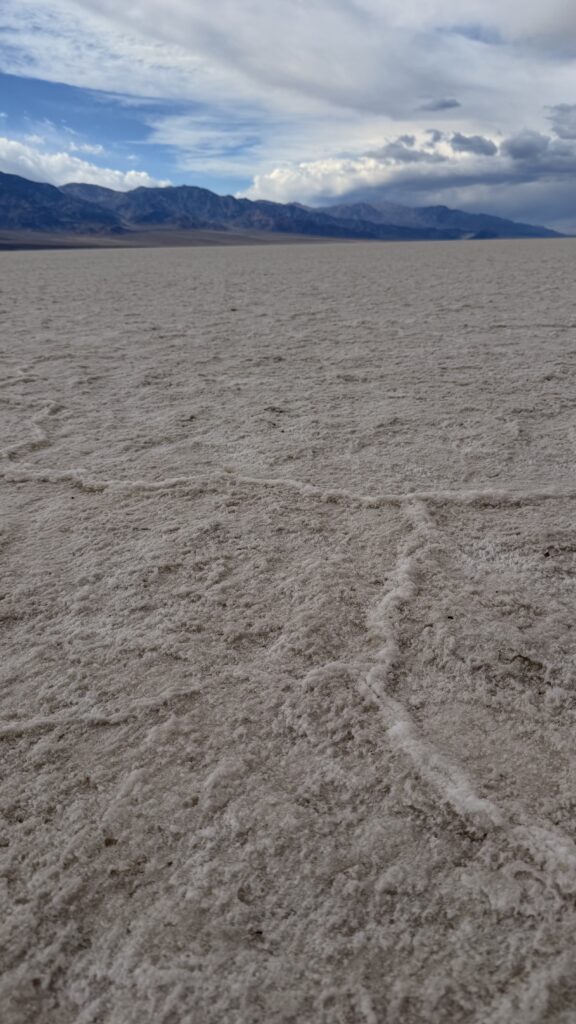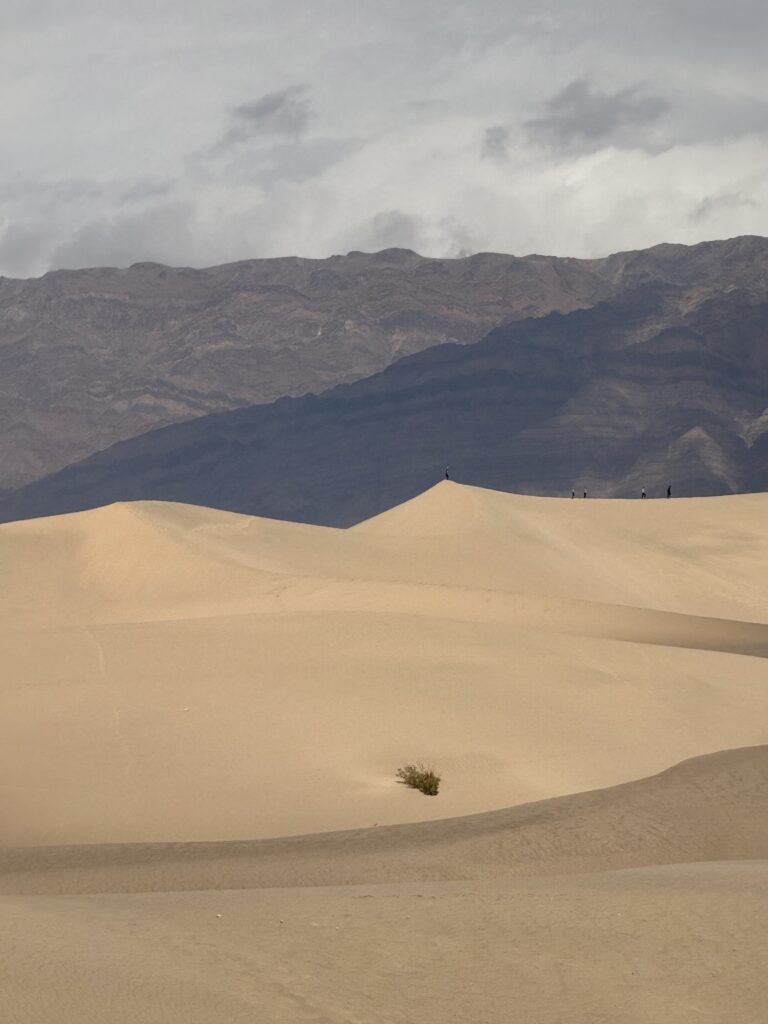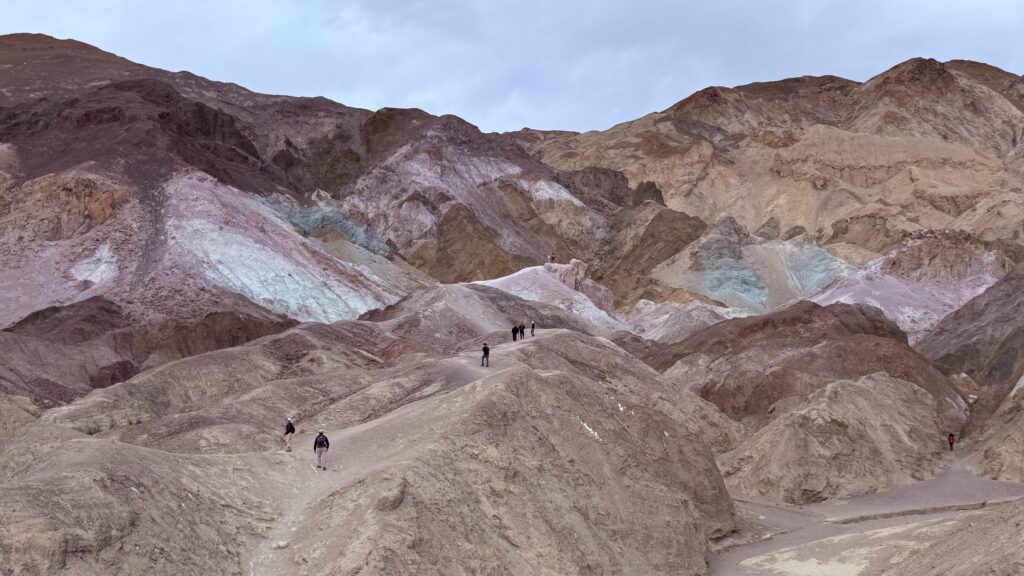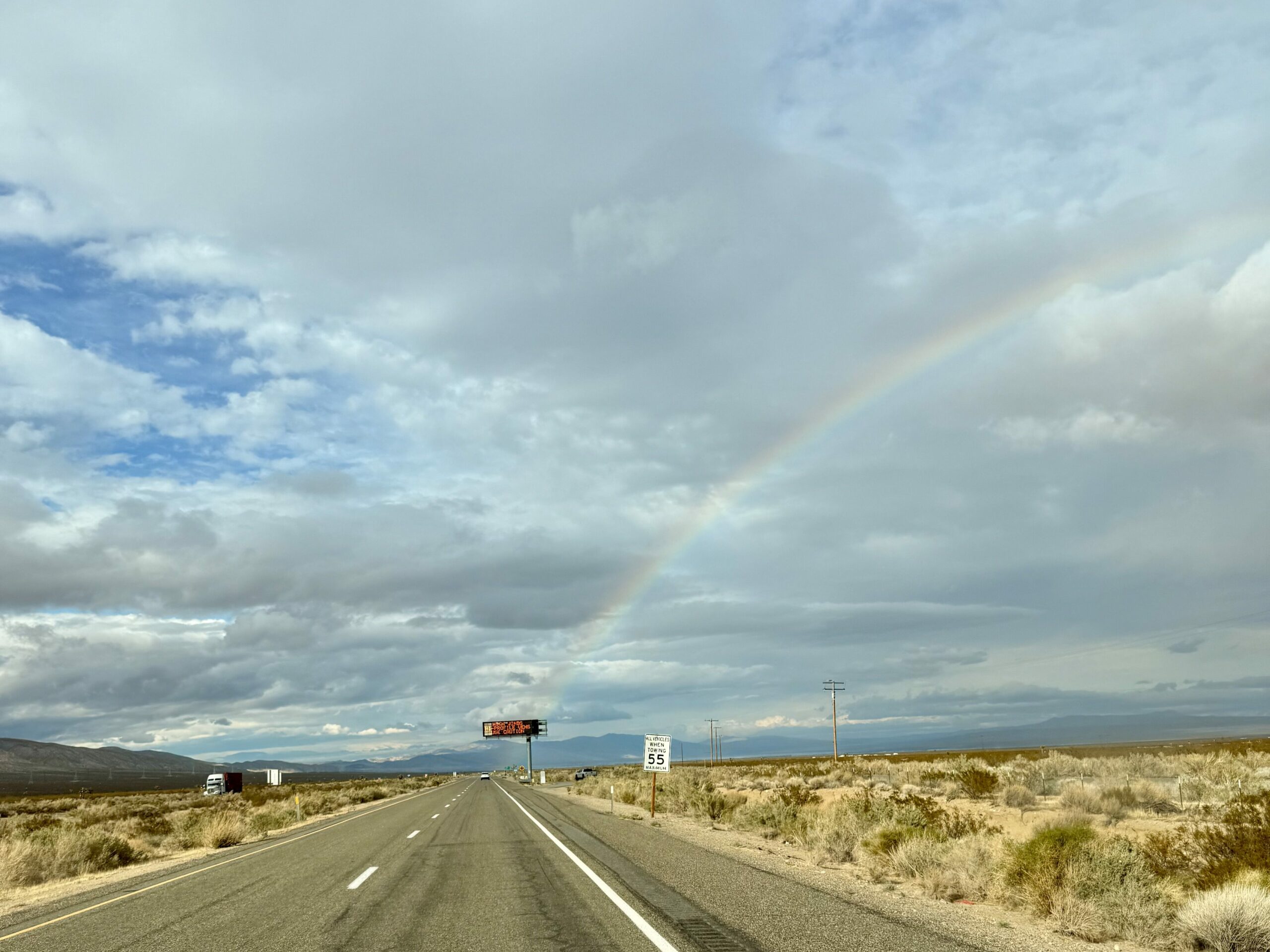How To Navigate Death Valley National Park
The Hottest Place on Earth
There’s something deeply humbling about standing in a landscape so vast, so ancient, and so unforgiving that it reminds you of your place in the universe. Death Valley National Park, a name that evokes mystery and danger, is more than just a record-breaking furnace. It is a masterpiece of extremes – a land of towering sand dunes, salt flats that stretch endlessly, and colorful canyons sculpted by time.
When I ventured into Death Valley with my cousin in our hippie-looking camper van, I wasn’t expecting a spiritual awakening. But as the sun dipped below the horizon and the desert exhaled the day’s heat, I realized that this place wasn’t just a test of endurance – it was a lesson in presence, resilience, and surrender.
Be aware that upon entering the park, you won’t see a manned kiosk. Instead, you’ll have to pay the fee or show your pass at the Visitor Center to get a receipt to place on your dashboard. They will also give you a paper map of the park, which will be useful since you’ll be driving around without cell phone service. Some of the dirt roads on the map are only suitable for 4WD and the terrain can get pretty rough, so keep that in mind too.
A Landscape Beyond Imagination
- Badwater Basin: The lowest point in North America at 282 feet/ 85.5 meters below sea level, this salt flat shimmers like a mirage under the relentless sun. Walking across it feels like stepping onto another planet. The vast, surreal salt flats of Badwater Basin change constantly, salt crystals expand, pushing the crust of the salt into rough, chaotic forms. Floods create temporary lakes that dissolve salts back into solution, starting the process all over again.
- Mesquite Flat Sand Dunes: Shifting hills of golden sand that feel alive, changing shape with the wind. Sunrise and sunset paint them with surreal hues, making them a photographer’s dream. The 14-square-mile dunes are the most famous and easiest to reach but don’t underestimate the challenge – strong winds, shifting sands, and the need for proper footwear can make climbing them tougher than expected.
- Zabriskie Point: A vantage point that reveals a labyrinth of golden and russet ridges sculpted by ancient lakes and erosion. It’s a place of beauty that invites contemplation and a great place to see the sunrise or sunset.
- Artist’s Palette: Volcanic eruptions five million years ago deposited ash and minerals, which were chemically altered by heat, water, and oxygen. This created colorful landscapes with varying hues in the rocks, from pink and purple to teal and deep green.
- Devil’s Golf Course: A vast expanse of jagged salt formations, so sharp and irregular that “only the devil could play golf there.” The eerie silence is occasionally broken by the crackling sound of salt crystals expanding.
- Ubehebe Crater: A massive volcanic crater formed by a powerful explosion of steam and gas. Standing on its rim, you can feel the raw power that shaped this land.




The Science Behind the Extremes Death Valley holds the world’s highest recorded temperature – 134°F (56.7°C) in 1913. But why is it so hot?
- The valley’s basin shape traps heat, creating an oven-like effect.
- The surrounding mountains prevent cooling breezes from reaching the valley floor.
- The dry air and clear skies allow intense solar radiation.
Surprisingly, despite these conditions, life thrives here. Pupfish survive in salty pools, desert foxes prowl at night, and wildflowers explode in color after rare rainfalls. In fact, we were trying to outrun storm clouds when, inevitably, they caught up with us. Instead of the scorching sun, we found ourselves standing in a gentle rain shower, watching a brilliant rainbow stretch across the Mojave Desert – a fleeting, magical moment that felt like a gift from the land itself.

Exploring on Foot and by Car
Whether you have a few hours or a full day, Death Valley offers unforgettable hikes and drives through its rugged terrain.
Hiking Trails:
- Golden Canyon to Red Cathedral (3 miles round trip) – A breathtaking hike through golden-hued canyons leading to towering red rock formations.
- Mosaic Canyon Trail (3.5 miles round trip) – Wander through narrow, polished marble-like canyon walls carved by centuries of flash floods.
- Natural Bridge Trail (1 mile round trip) – A short but rewarding walk to a massive natural rock bridge, easily completed in under 45 minutes.
Scenic Drives:
- Artist’s Drive (9 miles, one-way) – A winding road through colorful hills, showcasing the vibrant hues of Artist’s Palette.
- Twenty Mule Team Canyon (2.7 miles) – A short but stunning drive through a maze of golden badlands, rich in mining history.
- Titus Canyon Road (27 miles, one-way dirt road) – An unforgettable journey through towering canyon walls, ghost town ruins, and dramatic desert scenery.
How to Respect the Desert and Stay Safe Many travelers underestimate Death Valley’s extremes, leading to fatal consequences. On average, one or two people die here annually, often due to heat exhaustion, dehydration, or car trouble in remote areas. Here’s how to stay safe:
- Visit in the right season: Late fall to early spring offers bearable temperatures. The wind, heat, and rain make conditions unpredictable, so don’t be surprised to see people in flip-flops while simultaneously wearing winter coats.
- Pack wisely: Carry at least a gallon of water per person per day, electrolyte supplements, sun protection, and a satellite communication device because there’s no cell phone reception.
- Service your car: Ensure your vehicle is in top condition – breakdowns in the heat can be deadly. Try not to overheat your car by running AC. Also, keep your gas tank full.
- Know your limits: Hiking in extreme heat is dangerous. Start early and choose short trails. Always keep water on you.
Where to Stay: Camping & Lodging For those seeking full immersion, campgrounds like Furnace Creek and Mesquite Spring offer stunning desert vistas. If comfort is key, The Oasis at Death Valley provides air-conditioned luxury amidst the harsh landscape. This park is only 2 hours away from Las Vegas, which makes it perfect for a day trip, and the closes airport

The Stories the Sand Holds
Death Valley is more than a natural wonder – it’s a land rich with history. Native Timbisha Shoshone people have called it home for centuries, surviving in harmony with the land. The valley also witnessed the California Gold Rush, with hopeful prospectors braving its extremes in search of fortune. Some of the mines that have been long abandoned may be dangerous, so park rangers advise to stay away from them.
Finding Wisdom in the Wilderness
Visiting Death Valley is a paradoxical experience. All 3 million acres of it is both humbling and empowering. As I sat beneath a star-drenched sky, I realized this place teaches you to respect nature’s power while embracing your own resilience. In the stillness of the desert, you learn to listen to the wind, to the shifting sands, and to yourself.
Would You Dare to Visit?





